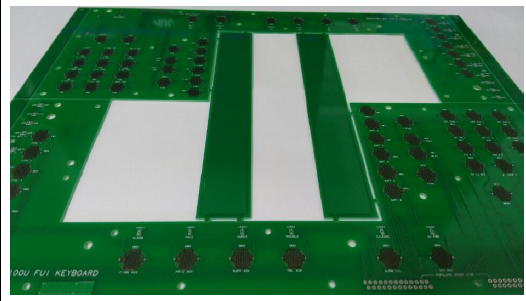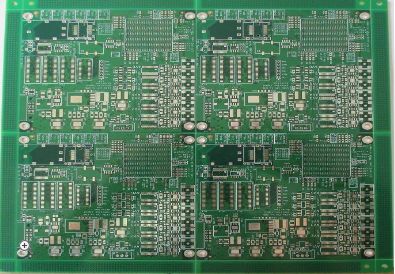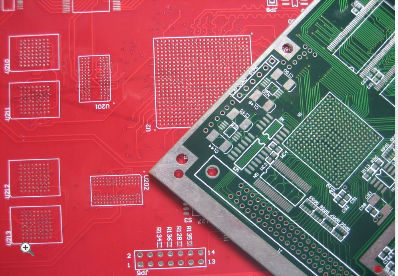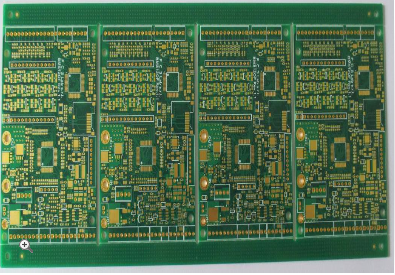-
 Agriculture
Agriculture
-
 Health-Care
Health-Care
-
 Environment
Environment
-
 Construction-Real-Estate
Construction-Real-Estate
-
 Tools-Hardware
Tools-Hardware
-
 Home-Garden
Home-Garden
-
 Furniture
Furniture
-
 Luggage-Bags-Cases
Luggage-Bags-Cases
-
 Medical-devices-Supplies
Medical-devices-Supplies
-
 Gifts-Crafts
Gifts-Crafts
-
 Sports-Entertainment
Sports-Entertainment
-
 Food-Beverage
Food-Beverage
-
 Vehicles-Transportation
Vehicles-Transportation
-
 Power-Transmission
Power-Transmission
-
 Material-Handling
Material-Handling
-
 Renewable-Energy
Renewable-Energy
-
 Safety
Safety
-
 Testing-Instrument-Equipment
Testing-Instrument-Equipment
-
 Construction-Building-Machinery
Construction-Building-Machinery
-
 Pet-Supplies
Pet-Supplies
-
 Personal-Care-Household-Cleaning
Personal-Care-Household-Cleaning
-
 Vehicle-Accessories-Electronics-Tools
Vehicle-Accessories-Electronics-Tools
-
 School-Office-Supplies
School-Office-Supplies
-
 Packaging-Printing
Packaging-Printing
-
 Mother-Kids-Toys
Mother-Kids-Toys
-
 Business-Services
Business-Services
-
 Commercial-Equipment-Machinery
Commercial-Equipment-Machinery
-
 Apparel-Accessories
Apparel-Accessories
-
 Security
Security
-
 Shoes-Accessories
Shoes-Accessories
-
 Vehicle-Parts-Accessories
Vehicle-Parts-Accessories
-
 Jewelry-Eyewear-Watches-Accessories
Jewelry-Eyewear-Watches-Accessories
-
 Lights-Lighting
Lights-Lighting
-
 Fabric-Textile-Raw-Material
Fabric-Textile-Raw-Material
-
 Fabrication-Services
Fabrication-Services
-
 Industrial-Machinery
Industrial-Machinery
-
 Consumer-Electronics
Consumer-Electronics
-
 Electrical-Equipment-Supplies
Electrical-Equipment-Supplies
-
 Electronic-Components-Accessories-Telecommunications
Electronic-Components-Accessories-Telecommunications
-
 Home-Appliances
Home-Appliances
-
 Beauty
Beauty
-
 Chemicals
Chemicals
-
 Rubber-Plastics
Rubber-Plastics
-
 Metals-Alloys
Metals-Alloys
- Masonry Materials
- Curtain Walls & Accessories
- Earthwork Products
- Fireproofing Materials
- Heat Insulation Materials
- Plastic Building Materials
- Building Boards
- Soundproofing Materials
- Timber
- Waterproofing Materials
- Balustrades & Handrails
- Bathroom & Kitchen
- Flooring & Accessories
- Tiles & Accessories
- Door, Window & Accessories
- Fireplaces & Stoves
- Floor Heating Systems & Parts
- Stairs & Stair Parts
- Ceilings
- Elevators & Escalators
- Stone
- Countertops, Vanity Tops & Table Tops
- Mosaics
- Metal Building Materials
- Multifunctional Materials
- Ladders & Scaffoldings
- Mouldings
- Corner Guards
- Decorative Films
- Formwork
- Building & Industrial Glass
- Other Construction & Real Estate
- Wallpapers/Wall panels
- HVAC System & Parts
- Outdoor Facilities
- Prefabricated Buildings
- Festive & Party Supplies
- Bathroom Products
- Household Sundries
- Rain Gear
- Garden Supplies
- Household Cleaning Tools & Accessories
- Lighters & Smoking Accessories
- Home Storage & Organization
- Household Scales
- Smart Home Improvement
- Home Textiles
- Kitchenware
- Drinkware & Accessories
- Dinnerware, Coffee & Wine
- Home Decor
- Golf
- Fitness & Body Building
- Amusement Park Facilities
- Billiards, Board Game,Coin Operated Games
- Musical Instruments
- Outdoor Affordable Luxury Sports
- Camping & Hiking
- Fishing
- Sports Safety&Rehabilitation
- Ball Sports Equipments
- Water Sports
- Winter Sports
- Luxury Travel Equipments
- Sports Shoes, Bags & Accessories
- Cycling
- Other Sports & Entertainment Products
- Artificial Grass&Sports Flooring&Sports Court Equipment
- Scooters
- Food Ingredients
- Honey & Honey Products
- Snacks
- Nuts & Kernels
- Seafood
- Plant & Animal Oil
- Beverages
- Fruit & Vegetable Products
- Frog & Escargot
- Bean Products
- Egg Products
- Dairy Products
- Seasonings & Condiments
- Canned Food
- Instant Food
- Baked Goods
- Other Food & Beverage
- Meat & Poultry
- Confectionery
- Grain Products
- Feminie Care
- Hair Care & Styling
- Body Care
- Hands & Feet Care
- Hygiene Products
- Men's Grooming
- Laundry Cleaning Supplies
- Travel Size & Gift Sets
- Room Deodorizers
- Other Personal Care Products
- Pest Control Products
- Special Household Cleaning
- Floor Cleaning
- Kitchen & Bathroom Cleaning
- Oral Care
- Bath Supplies
- Yellow Pages
- Correction Supplies
- Office Binding Supplies
- Office Cutting Supplies
- Board Erasers
- Office Adhesives & Tapes
- Education Supplies
- Pencil Cases & Bags
- Notebooks & Writing Pads
- File Folder Accessories
- Calendars
- Writing Accessories
- Commercial Office Supplies
- Pencil Sharpeners
- Pens
- Letter Pad/Paper
- Paper Envelopes
- Desk Organizers
- Pencils
- Markers & Highlighters
- Filing Products
- Art Supplies
- Easels
- Badge Holder & Accessories
- Office Paper
- Printer Supplies
- Book Covers
- Other Office & School Supplies
- Stationery Set
- Boards
- Clipboards
- Stamps
- Drafting Supplies
- Stencils
- Electronic Dictionary
- Books
- Map
- Magazines
- Calculators
- Baby & Toddler Toys
- Educational Toys
- Classic Toys
- Dress Up & Pretend Play
- Toy Vehicle
- Stuffed Animals & Plush Toys
- Outdoor Toys & Structures
- Balloons & Accessories
- Baby Food
- Children's Clothing
- Baby Supplies & Products
- Maternity Clothes
- Kids Shoes
- Baby Care
- Novelty & Gag Toys
- Dolls & Accessories
- Puzzle & Games
- Blocks & Model Building Toys
- Toddler Clothing
- Baby Clothing
- Kids' Luggage & Bags
- Arts, Crafts & DIY Toys
- Action & Toy Figures
- Baby Appliances
- Hobbies & Models
- Remote Control Toys
- Promotional Toys
- Pregnancy & Maternity
- Hygiene Products
- Kid's Textile&Bedding
- Novelty & Special Use
- Toy Weapons
- Baby Gifts
- Baby Storage & Organization
- Auto Drive Systems
- ATV/UTV Parts & Accessories
- Marine Parts & Accessories
- Other Auto Parts
- Trailer Parts & Accessories
- Auto Transmission Systems
- Train Parts & Accessories
- Universal Parts
- Railway Parts & Accessories
- Auto Brake Systems
- Aviation Parts & Accessories
- Truck Parts & Accessories
- Auto Suspension Systems
- Auto Lighting Systems
- New Energy Vehicle Parts & Accessories
- Auto Steering Systems
- Wheels, Tires & Accessories
- Bus Parts & Accessories
- Auto Performance Parts
- Cooling System
- Go-Kart & Kart Racer Parts & Accessories
- Air Conditioning Systems
- Heavy Duty Vehicle Parts & Accessories
- Auto Electrical Systems
- Auto Body Systems
- Auto Engine Systems
- Container Parts & Accessories
- Motorcycle Parts & Accessories
- Refrigeration & Heat Exchange Equipment
- Machine Tool Equipment
- Food & Beverage Machinery
- Agricultural Machinery & Equipment
- Apparel & Textile Machinery
- Chemical Machinery
- Packaging Machines
- Paper Production Machinery
- Plastic & Rubber Processing Machinery
- Industrial Robots
- Electronic Products Machinery
- Metal & Metallurgy Machinery
- Woodworking Machinery
- Home Product Manufacturing Machinery
- Machinery Accessories
- Environmental Machinery
- Machinery Service
- Electrical Equipment Manufacturing Machinery
- Industrial Compressors & Parts
- Tobacco & Cigarette Machinery
- Production Line
- Used Industrial Machinery
- Electronics Production Machinery
- Other Machinery & Industrial Equipment
- Camera, Photo & Accessories
- Portable Audio, Video & Accessories
- Television, Home Audio, Video & Accessories
- Video Games & Accessories
- Mobile Phone & Accessories
- Electronic Publications
- Earphone & Headphone & Accessories
- Speakers & Accessories
- Smart Electronics
- TV Receivers & Accessories
- Mobile Phone & Computer Repair Parts
- Chargers, Batteries & Power Supplies
- Used Electronics
- VR, AR, MR Hardware & Software
- Projectors & Presentation Equipments
- Other Consumer Electronics
- Cables & Commonly Used Accessories
- Computer Hardware & Software
- Displays, Signage and Optoelectronics
- Discrete Semiconductors
- Wireless & IoT Module and Products
- Telecommunications
- Connectors, Terminals & Accessories
- Development Boards, Electronic Modules and Kits
- Circuit Protection
- Sensors
- Isolators
- Audio Components and Products
- Integrated Circuits
- Power Supplies
- Relays
- RF, Microwave and RFID
- Electronic Accessories & Supplies
- Passive Components
- PCB & PCBA
- Air Quality Appliances
- Home Appliance Parts
- Heating & Cooling Appliances
- Small Kitchen Appliances
- Laundry Appliances
- Water Heaters
- Water Treatment Appliances
- Refrigerators & Freezers
- Personal Care & Beauty Appliances
- Major Kitchen Appliances
- Cleaning Appliances
- Second-hand Appliances
- Smart Home Appliances
- Other Home Appliances
- Energy Chemicals
- Inorganic Chemicals
- Basic Organic Chemicals
- Agrochemicals
- Admixture & Additives
- Catalysts & Chemical Auxiliary Agents
- Pigments & Dyestuff
- Coating & Paint
- Daily Chemicals
- Polymer
- Organic Intermediate
- Adhesives & Sealants
- Chemical Waste
- Biological Chemical Products
- Surface Treatment Chemicals
- Painting & Coating
- Chemical Reagents
- Flavor & Fragrance
- Non-Explosive Demolition Agents
- Other Chemicals
- Custom Chemical Services
Polyimide FPC Board Manufacturing for Enhanced Signal Integrity and Minimal Space Usage
In the rapidly evolving landscape of electronics, the demand for compact, high-performance devices has never been greater. From smartphones and wearables to advanced medical implants and aerospace systems, engineers face the dual challenge of maintaining signal integrity while minimizing spatial footprint. This is where Polyimide Flexible Printed Circuit (FPC) boards emerge as a game-changing solution. Polyimide, a high-performance polymer known for its exceptional thermal stability, mechanical flexibility, and electrical insulation properties, serves as the foundation for FPCs that can bend, twist, and fit into tight spaces without compromising functionality. The manufacturing of these boards is not just about creating flexible circuits; it is a sophisticated process aimed at enhancing signal transmission quality and enabling innovative designs that rigid boards cannot achieve. By delving into the intricacies of Polyimide FPC board manufacturing, we can uncover how this technology addresses critical issues like electromagnetic interference, space constraints, and reliability in modern electronics, making it indispensable for next-generation applications.
Material Properties and Their Impact on Performance
Polyimide stands out as the material of choice for FPC boards due to its unique combination of properties that directly contribute to enhanced signal integrity and minimal space usage. With a high glass transition temperature typically exceeding 300°C, polyimide substrates can withstand harsh manufacturing processes like soldering and exposure to extreme environments without degrading. This thermal resilience ensures that the board maintains its structural integrity over time, reducing the risk of failures that could disrupt signal paths. Moreover, polyimide's low dielectric constant and dissipation factor play a crucial role in preserving signal quality. These electrical characteristics minimize signal loss and distortion at high frequencies, which is vital for applications involving high-speed data transmission, such as in 5G devices or automotive radar systems.
Beyond electrical performance, the inherent flexibility of polyimide allows for dramatic reductions in space requirements. Unlike traditional rigid boards, which occupy fixed volumes, polyimide FPCs can be folded or rolled into compact forms, enabling sleeker product designs. This flexibility also aids in shock and vibration resistance, as the board can absorb mechanical stresses without cracking. Additionally, polyimide's lightweight nature contributes to overall weight savings in portable devices, further enhancing their appeal. The material's chemical resistance ensures longevity, even when exposed to moisture or corrosive substances, making it suitable for demanding industries like healthcare and aerospace. By leveraging these properties, manufacturers can create FPC boards that not only fit into confined spaces but also deliver reliable, high-fidelity signals over extended periods.
Advanced Manufacturing Techniques for Signal Integrity
The production of polyimide FPC boards involves precision-driven processes that are critical for achieving enhanced signal integrity. It begins with the careful selection and preparation of the polyimide substrate, which is often coated with a thin layer of copper for circuitry. Photolithography is then employed to define intricate circuit patterns, using high-resolution masks to ensure accurate trace widths and spacings. This step is paramount because even minor deviations can lead to impedance mismatches, crosstalk, or signal reflections, all of which degrade performance. To mitigate these issues, manufacturers utilize controlled impedance techniques, where the dimensions and materials are calibrated to maintain consistent electrical characteristics across the board. For instance, by adjusting the dielectric thickness and trace geometry, they can achieve precise impedance values that match the requirements of high-speed signals, reducing attenuation and electromagnetic interference (EMI).
Further enhancements come from multilayer FPC constructions, which allow for complex routing while conserving space. Through advanced lamination processes, multiple polyimide layers are bonded together with adhesive or adhesiveless methods, creating embedded vias and blind microvias that facilitate short interconnects between layers. These shortened paths minimize signal propagation delays and reduce the chance of noise coupling. Surface finish options, such as immersion gold or electroless nickel immersion gold (ENIG), are applied to protect copper traces from oxidation and ensure reliable solderability, which is essential for maintaining signal continuity in assembled systems. Additionally, manufacturers often incorporate shielding layers—like thin copper or silver inks—to guard against external EMI, further preserving signal purity. By integrating these techniques, polyimide FPC manufacturing transforms raw materials into robust platforms that support high-frequency applications with minimal signal degradation.
Design Strategies for Space Optimization and Reliability
Effective design is at the heart of utilizing polyimide FPC boards for minimal space usage without sacrificing performance. Engineers employ 3D modeling and simulation tools to plan flexible circuits that conform to the available geometry within a device, such as wrapping around batteries or fitting into curved housings. This dynamic approach allows for the consolidation of multiple rigid boards into a single FPC, reducing connector counts and overall assembly size. For example, in wearable technology, a well-designed polyimide FPC can replace several interconnected components, leading to lighter and more ergonomic products. The ability to create bendable circuits also enables innovative form factors, like rollable displays or compact sensors in medical devices, where space is at a premium.
Reliability is equally prioritized in these designs, with considerations for flex endurance and environmental resilience. Strain relief features, such as tapered traces and avoid sharp bends, are incorporated to prevent cracking during repeated flexing. Manufacturers conduct rigorous testing, including bend cycle tests and thermal cycling, to ensure the board can withstand real-world conditions. Moreover, the use of coverlays—protective polyimide layers with acrylic adhesives—shields the circuitry from physical damage and contaminants, extending the board's lifespan. In applications like automotive electronics or industrial controls, where temperature fluctuations and mechanical stresses are common, these design strategies ensure that the FPC maintains signal integrity over time. By balancing space-saving layouts with durability measures, polyimide FPC manufacturing enables the creation of electronics that are not only compact but also dependable in diverse operating environments.
Applications and Future Trends in Electronics
The adoption of polyimide FPC boards spans a wide range of industries, driven by their ability to enhance signal integrity and minimize space. In consumer electronics, they are integral to smartphones, tablets, and laptops, where high-speed data buses and compact form factors are essential. For instance, the flexible connectors in foldable phones rely on polyimide FPCs to maintain signal clarity while enduring constant bending. In the automotive sector, these boards support advanced driver-assistance systems (ADAS) by enabling reliable sensor connections in tight spaces, such as behind dashboards or within camera modules. Medical devices, including pacemakers and endoscopes, benefit from the biocompatibility and flexibility of polyimide FPCs, allowing for minimally invasive designs that prioritize patient safety and signal accuracy.
Looking ahead, emerging trends promise to further elevate the role of polyimide FPC manufacturing. The integration of additive manufacturing techniques, like inkjet printing of conductive inks, could enable even finer circuit patterns and reduced material waste. Developments in polyimide composites, such as incorporating nanomaterials, may lead to substrates with improved thermal conductivity or self-healing properties, enhancing signal integrity in extreme conditions. Additionally, the growth of the Internet of Things (IoT) and wearable technology will drive demand for ultra-thin, high-density FPCs that can operate efficiently in power-constrained environments. As industries push for smaller, faster, and more reliable electronics, polyimide FPC boards will continue to evolve, solidifying their position as a cornerstone of innovative design and performance optimization.
REPORT































































































































































































































































































































































































































































































































































































